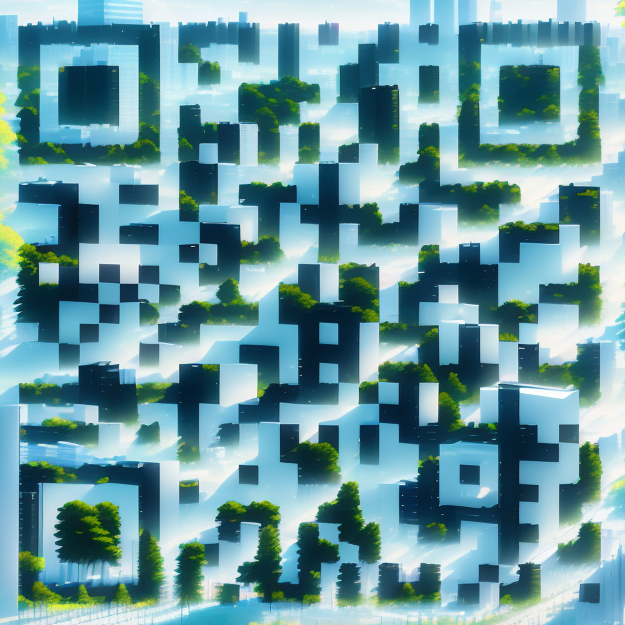Research on the Application of CGAN in the Design of Historic Building Facades in Urban Renewal—Taking Fujian Putian Historic Districts as an Example
Abstract: Artificial intelligence (AI) has influenced the design field, offering solutions to urban renewal design problems. This study aims to develop a stylized generation technology for building facade decoration in historic districts using conditional generative adversarial networks (CGANs). The research focuses on Putian, a historic district in Fujian Province. It includes image data acquisition, processing, screening, model training, image generation, and style matching. Findings show CGAN technology effectively generates historical district decorative styles, providing overall or partial facade design schemes. The method adapts to historical district reconstruction, facade renovation, and renovation design, especially for districts with distinct styles. It aids in determining facade decoration styles for specific historical buildings. The method learns internal laws of complex district styles, generating new designs with clear style attributes. It enhances stylized control in historical heritage protection, improving design efficiency. [SCITIP]
DOI: https://doi.org/10.3390/buildings13061478
CITE: Lin, Hongpan, Linsheng Huang, Yile Chen, Liang Zheng, Minling Huang, and Yashan Chen. 2023. “Research on the Application of CGAN in the Design of Historic Building Facades in Urban Renewal—Taking Fujian Putian Historic Districts as an Example” Buildings 13, no. 6: 1478. https://doi.org/10.3390/buildings13061478
作者的话
1. 心得分享
今日分享之论文,是本月见刊上线的第一篇 SCIE 期刊论文。距离上次发表见刊,已经快两三个月了。因为前段时间一直都在做毕业设计,各种事情,小论文进度就慢了。上期预告也有提及,《Research on the Application of CGAN inthe Design of Historic Building Facades in Urban Renewal—Taking Fujian PutianHistoric Districts as an Example》(CGAN 在历史建筑立面设计中的城市更新应用研究一一以福建莆田历史街区为例)一文于 6 月份在线发表在期刊 Buildings(ISSN: 2075-5309)(SCIE、Scopus)之 Special Issue “Multi-Dimensional Organic Conservation of Historical Neighborhood Buildings in the Context of Sustainable Urban Renewal”(可持续城市更新背景下历史街区建筑的多维有机保护)之中。本期重点介绍一下。
![[JCR] CGAN in the Design of Historic Building Facades [JCR] CGAN in the Design of Historic Building Facades](https://scitip.com/wp-content/uploads/2023/07/image-28-1024x622.png)
![[JCR] CGAN in the Design of Historic Building Facades [JCR] CGAN in the Design of Historic Building Facades](https://scitip.com/wp-content/uploads/2023/07/image-29-1024x513.png)
线上阅读地址:https://www.mdpi.com/2075-5309/13/6/1478
引用格式:Lin, Hongpan, Linsheng Huang, Yile Chen, Liang Zheng, Minling Huang, and Yashan Chen. 2023. “Research on the Application of CGAN in the Design of Historic Building Facades in Urban Renewal—Taking Fujian Putian Historic Districts as an Example” Buildings 13, no. 6: 1478. https://doi.org/10.3390/buildings13061478
2. 简单讲讲
相比较于之前的武夷建筑风格的立面风貌整治,这次是福建的另一个地域性风格,莆仙风格。莆仙风格建筑作为闽南建筑风格的一个分支,也是中国地域建筑体系的重要补充。
它的风格特点兼容了泉州传统建筑注重外部装饰的特征,又包含了福州官家大宅的气派和威严,在此基础上形成了自己独特的建筑个性。由于从莆田向海外的华侨人数众多,他们将原乡的建筑风格也带到了异国他乡,成为地方华商华侨对家园的精神寄托。
莆仙风格建筑也突破了地域的局限走向了更大的舞台。同时,可以看到,莆仙风格建筑大都采用砖木结合的形式,采用的就地取材与贴合自然审美,适应了当代对建筑可持续发展的要求。但由于早期的粗犷式、规模化、大拆大建的城市建设导致我们生活的地方逐渐沦为钢筋混凝土的竞技场,如何组织好城市文脉、改造好当下历史街区中的莆仙风格建筑风貌始终是社会各界关注的焦点。
而用 CGAN 训练再生成式设计的过程,作为历史街区有机更新的一种方法探索。这篇论文选取的例子来源于莆田萝苜田历史文化街区及兴化府历史文化街区,是福建莆田两处具有代表性的省级保护历史街区。
从主要沿街界面看,萝苜田与兴化府主街路段则更多保留了原始建筑,但因时间久远显得破败不堪。两个街区无论从造型、材质还是空间尺度上呈现了富有地方特色的立面风格形式,但同时也面临街区即将开始的立面装饰改造风格化选择的难题。
后面就是通过 CGAN 训练、生成结果的过程与分析。
中文摘要:近年来人工智能技术广泛影响设计领域,为高效、系统解决城市更新设计问题带来了新的思路。本研究旨在以人工智能方法开发历史街区建筑立面装饰风格化生成技术,以支持街区风貌形态的设计与管控。目标是采用条件生成对抗式神经网络(CGAN)在图像生成、风格迁移等工作中的技术优势,通过解读历史街区立面图像数据并创建自主设计特定立面装饰风格的方法。
本文研究是以福建莆田历史街区作为对象展开,通过目标区域的图像数据获取、图像处理与筛选、模型训练、图像生成与风格匹配等实验研究揭示:
- (1)基于 CGAN 技术能够很好地识别和生成历史街区装饰风格,能够实现对立面整体或者局部的方案设计;
- (2)适应性方面,该方法针对历史街区重建、立面翻新和改造设计等项目也能提供较好的辅助依据,特别是装饰风格明显的街区,可视化的效果更好。另外对特定历史建筑单体的立面装饰风格的确定与设计也具备一定的参考意义;
- (3)该方法能够较好学习复杂街区风貌形态的内在规律,以生成全新具有明确装饰风格属性的设计,可推广到其他历史遗产保护与修缮领域,以增强从业人员对遗产环境的风格化把控,提升专业设计的效率与能力。
论文标题框架:
1. Introduction
1.1. Research Background
1.2. Literature Review
1.3. Problem Statement and Objectives
2. Materials and Research Strategy
2.1. Study Area
2.2. Methodology
2.3. Material Handling
2.4. CGAN Model
3. Results
3.1. Model Evaluation
3.2. Model Testing
3.3. Model Comparison
4. Discussion: Application of Model and Design of Historic District Scheme
4.1. Model Application
4.2. Application of Multi-Scheme Generation
5. Conclusions
Appendix A
References
3. 文章插图
![[JCR] CGAN in the Design of Historic Building Facades [JCR] CGAN in the Design of Historic Building Facades](https://scitip.com/wp-content/uploads/2023/07/image-30.png)
![[JCR] CGAN in the Design of Historic Building Facades [JCR] CGAN in the Design of Historic Building Facades](https://scitip.com/wp-content/uploads/2023/07/image-31-1024x724.png)
![[JCR] CGAN in the Design of Historic Building Facades [JCR] CGAN in the Design of Historic Building Facades](https://scitip.com/wp-content/uploads/2023/07/image-32-950x1024.png)
![[JCR] CGAN in the Design of Historic Building Facades [JCR] CGAN in the Design of Historic Building Facades](https://scitip.com/wp-content/uploads/2023/07/image-33-1024x893.png)
![[JCR] CGAN in the Design of Historic Building Facades [JCR] CGAN in the Design of Historic Building Facades](https://scitip.com/wp-content/uploads/2023/07/image-34-1024x378.png)
![[JCR] CGAN in the Design of Historic Building Facades [JCR] CGAN in the Design of Historic Building Facades](https://scitip.com/wp-content/uploads/2023/07/image-35-1024x411.png)
![[JCR] CGAN in the Design of Historic Building Facades [JCR] CGAN in the Design of Historic Building Facades](https://scitip.com/wp-content/uploads/2023/07/image-36-1024x582.png)
![[JCR] CGAN in the Design of Historic Building Facades [JCR] CGAN in the Design of Historic Building Facades](https://scitip.com/wp-content/uploads/2023/07/image-37-1024x435.png)
![[JCR] CGAN in the Design of Historic Building Facades [JCR] CGAN in the Design of Historic Building Facades](https://scitip.com/wp-content/uploads/2023/07/image-38-1024x435.png)
![[JCR] CGAN in the Design of Historic Building Facades [JCR] CGAN in the Design of Historic Building Facades](https://scitip.com/wp-content/uploads/2023/07/image-39-1024x435.png)
![[JCR] CGAN in the Design of Historic Building Facades [JCR] CGAN in the Design of Historic Building Facades](https://scitip.com/wp-content/uploads/2023/07/image-40-1024x617.png)
![[JCR] CGAN in the Design of Historic Building Facades [JCR] CGAN in the Design of Historic Building Facades](https://scitip.com/wp-content/uploads/2023/07/image-41-1024x421.png)
![[JCR] CGAN in the Design of Historic Building Facades [JCR] CGAN in the Design of Historic Building Facades](https://scitip.com/wp-content/uploads/2023/07/image-42-1024x627.png)


